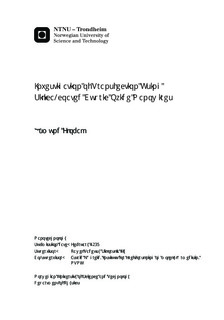| dc.description.abstract | One-dimensional high aspect ratio nanostructures grown from a copper foil are considered for intracellular delivery of bioactive molecules, such as drugs and genetic material. The cupric oxide (CuO) nanowires are coated with silicon oxides (SiOx), and embedded in a transparent polymer membrane consisting of the photoresist SU-8 and polydimethylsiloxane (PDMS). Nanowires are envisaged as one way two deliver bioactive molecules to many cells in parallel. It has previously been shown that both HeLa and AR42J cells grow and spread on this nanowire surface. The overarching goal of the current project is to test and optimize delivery of genetic material to cells grown on nanowires. It is first shown that nanowires are not able to induce knockdown of a constitutively expressed protein by delivering siRNA, when cells are sedimenting on top of an array of nanowires by gravitation. It is then shown that nanowire-mediated transfection of plasmids perform similar to flat surfaces, which are chemically identical apart from the nanowires, when HeLa cells are sedimenting down on a nanowire surface by gravitational pull. Increasing the sedimenting force by centrifugation has no effect on transfection efficiency, with relative centrifugal forces up to 88,500 × g tested. Tapping the nanowire surface face-down on cells deposited at a high concentration, which is a well documented method in published articles, also performs similar to flat sur faces, with transfection efficiencies of 1% commonly seen, and occasionally higher (5%). Fluorescently labeled plasmid is quite efficiently delivered to cells by both flat surfaces and nanowire surfaces, with a trend towards more efficient delivery by nanowires. Delivered cargo is however confined to small sections of cells. Cells are not transfected in experiments with identical setups, indicating that delivered biomolecules are isolated from the internal machinery of a cell. In conclusion, our transfection efficiency results are on par with most published experiments. In published experiments control experiments with flat surfaces are often lacking, and our results emphasize the importance for proper controls when investigating nanowire-mediated transfection and delivery of biomolecules. | nb_NO |

